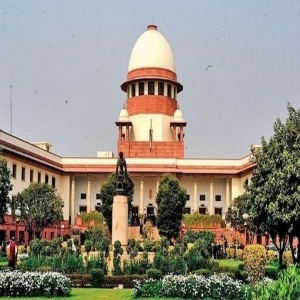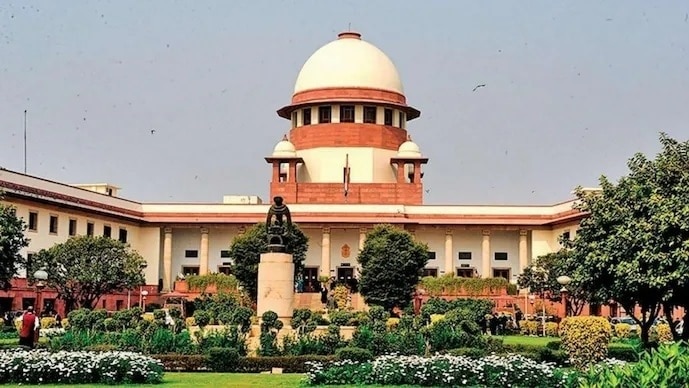

I stood at the steps of Madras High Court on April 8, watching as DMK supporters celebrated what they called "a new dawn for state rights." On that day, the Supreme Court of India had delivered what might be the most consequential federal judgment of the decade – a ruling that not only handed Tamil Nadu a decisive victory but potentially rewrote the playbook for every governor in the country. In declaring Governor RN Ravi's stonewalling of legislation as "unconstitutional" and "non-bonafide," India's highest court didn't just resolve a local deadlock; it fired a warning shot across the bow of an increasingly centralised Union government that has wielded governors as political weapons against opposition-ruled states.
The confrontation between Tamil Nadu's Dravida Munnetra Kazhagam (DMK) government, led by Chief Minister MK Stalin, and Governor Ravi, had been simmering for years. Twelve bills, primarily concerning the appointment of vice-chancellors to state universities, had languished in the governor's office between January 2020 and April 2023. Ravi, a former IPS officer appointed in 2021, had withheld assent, prompting the DMK to accuse him of functioning as an agent of the Bharatiya Janata Party (BJP)-led Union government rather than fulfilling his constitutional responsibilities.
When the Tamil Nadu government approached the Supreme Court in November 2023, Ravi swiftly referred two bills to the President and withheld consent on the remaining ten. The state assembly, undeterred, re-passed these ten bills in a special session, only for the governor to again refer them to the President. The Supreme Court's intervention, invoking its extraordinary powers under Article 142, declared this delay and referral unconstitutional, asserting that the bills were deemed assented to due to the governor's "non-bonafide" conduct.
For Chief Minister Stalin and the DMK government, the ruling represents an unequivocal triumph in their long-standing battle against what they perceive as unwarranted central interference in state affairs. Stalin framed the verdict as a "historic victory" not just for Tamil Nadu but for all states committed to preserving their legislative autonomy within India's federal framework. The DMK's ideological opposition to the gubernatorial office—long viewed as an anachronistic instrument of centralised control—found validation in the court's insistence that governors must act expeditiously and within strict constitutional parameters.
Senior DMK leaders emphasised that Ravi's delays violated Article 200, which clearly delineates a governor's options when presented with a bill: assent, withhold and return with reasons, or refer to the President—but notably, not indefinite inaction. The court's imposition of a one-to-three-month timeline for gubernatorial action further reinforced their argument that Ravi's prolonged silence on the bills constituted a deliberate political strategy rather than a principled constitutional stance.
Critics within Tamil Nadu have repeatedly asserted his alignment with the BJP's centralisation agenda, pointing to his frequent public pronouncements on contentious issues like Sanatana Dharma and Tamil identity that have antagonised the DMK leadership.
While the BJP has refrained from direct commentary on the ruling, the judgment implicitly criticises the Centre's strategic deployment of governors as instruments to exert influence over opposition-ruled states—a tactic that has provoked resistance not only in Tamil Nadu but also in Kerala, West Bengal, and other non-BJP-governed regions. The appointment of politically affiliated governors like Ravi, whose background includes intelligence work and reported ties to the Rashtriya Swayamsevak Sangh (RSS), fuels perceptions of a calculated attempt to undermine regional autonomy.
The BJP might contend that governors serve as essential constitutional checks on state governments, ensuring alignment with national priorities and policies. However, the Supreme Court's unambiguous reprimand—that governors cannot exercise an "absolute or pocket veto"—substantially weakens this justification, exposing the Centre to accusations of constitutional overreach. Tamil Nadu BJP leaders have attempted to downplay the significance of the verdict, suggesting it does not absolve the state government of its governance shortcomings, but the broader implication remains clear: the Union's strategy of leveraging gubernatorial authority to counter opposition-led state governments has encountered a significant judicial obstacle.
Opposition parties beyond Tamil Nadu's borders have embraced the verdict as a powerful symbol of resistance against perceived central encroachment. In Kerala, the Left Democratic Front (LDF) government hailed the ruling as a decisive blow against the Union government's alleged misuse of governors, drawing parallels to similar delays by Governor Arif Mohammed Khan.
The Communist Party of India (Marxist) characterised the judgment as a crucial step against "authoritarianism," arguing that it reinforces the federal principles enshrined in India's constitutional architecture. For these political forces, the ruling transcends the specific context of Tamil Nadu, establishing a precedent for challenging gubernatorial overreach throughout the country.
Interestingly, the All India Anna Dravida Munnetra Kazhagam (AIADMK), Tamil Nadu's primary opposition party, has maintained a conspicuous silence on the verdict, reflecting its delicate position as a former BJP ally. This reticence underscores the political complexity surrounding the ruling: while it weakens the governor's authority, it simultaneously strengthens the DMK government, leaving the AIADMK leadership to carefully calibrate its response.
Legal experts have offered more nuanced perspectives on the judgment's constitutional implications. The Supreme Court bench, comprising Justices JB Pardiwala and R Mahadevan, anchored their reasoning in Article 200, which explicitly mandates that a governor must either assent to a bill, withhold assent and return it with recommendations, or refer it to the President for consideration—but crucially, not indefinitely postpone action.
The court's invocation of Article 142 to deem the bills automatically assented to represents a bold judicial intervention, signalling a willingness to decisively resolve constitutional deadlocks when elected officials and appointees fail to fulfil their responsibilities. Some constitutional scholars have questioned this approach as potentially constituting "judicial overreach," arguing that it blurs the separation between judicial and executive domains. Others, however, view it as a necessary correction to gubernatorial excess and constitutional subversion.
The prescribed timeline—requiring governors to act within one to three months—introduces what Justice Pardiwala termed a "determinable judicial standard," subjecting gubernatorial discretion to meaningful scrutiny and limiting the scope for political manipulation. This newfound clarity, legal scholars suggest, could fundamentally reshape the relationship between governors and state governments, though questions persist about enforcement mechanisms and the potential for future constitutional conflicts.
Public opinion in Tamil Nadu, often overlooked in analyses of high-level constitutional disputes, has primarily aligned with the DMK's narrative. In a state where regional identity and autonomy are deeply cherished, the DMK has successfully portrayed the governor as an outsider interfering in local affairs. Ravi's controversial actions—including refusing to read portions of the governor's address in the assembly, publicly questioning the state anthem, and delaying legislation—have generated substantial public resentment, amplified by the DMK's portrayal of these incidents as part of a coordinated Union-orchestrated strategy to undermine Tamil Nadu's distinctive political and cultural identity.
Social media discourse reflects this sentiment, with many users characterising Ravi as "Modi's political agent" and celebrating the court's rebuke of what they perceive as a "Hindutva agenda" encroaching on Tamil Nadu's secular traditions. However, a segment of the state's population, particularly BJP supporters, views the governor's resistance as a principled stand against the DMK's alleged overreach in university appointments, arguing that higher education policies should align with national standards rather than narrow regional interests. This polarisation mirrors the broader state-union divide that characterises contemporary Indian politics, with ordinary citizens increasingly forced to navigate competing loyalties to regional identity and national unity.
The judgment's implications extend far beyond Tamil Nadu's borders, illuminating the persistent tension between state autonomy and Union authority in India's federal system. India's constitutional architecture, often described as "quasi-federal" with a unitary bias, assigns significant powers to the Centre, with governors appointed by the President (effectively the Union government) serving as its representatives in the states.
Historically, this arrangement has generated friction, from the Emergency-era dismissal of democratically elected state governments to more recent conflicts in Punjab, West Bengal, and Telangana. The Tamil Nadu case exemplifies how this structural tension can devolve into protracted political warfare, with governors functioning as proxies in larger ideological battles. The BJP's vision of a more centralised India, evident in policies like the National Education Policy, inevitably clashes with regional parties' demands for legislative independence, transforming constitutional offices into contested political terrain.
For the DMK, the verdict substantiates its electoral mandate, enabling the implementation of long-delayed reforms in higher education governance. The bills, now effectively law, transfer control over vice-chancellor appointments from the governor to the state government, aligning with the party's vision of decentralised governance rooted in regional authority. This victory may embolden the DMK to intensify its critique of the gubernatorial office itself, a position deeply embedded in its Dravidian political philosophy.
Stalin's declaration that "Tamil Nadu will fight, Tamil Nadu will win" signals a willingness to directly confront central overreach, potentially heightening Union-state tensions in the coming months. For the BJP, the ruling represents a strategic setback, limiting its ability to deploy governors as effective counterweights in opposition-governed states—a tactic that has previously proved valuable in impeding policies that diverge from its national agenda. The party may now need to recalibrate its approach, either by pursuing more aggressive legislative centralisation through Parliament or developing more subtle mechanisms to exert influence over state policies.
The Supreme Court, meanwhile, has reaffirmed its position as the ultimate arbiter of constitutional disputes, reinforcing its commitment to preserving the delicate balance between central authority and state autonomy that defines Indian federalism. By quoting BR Ambedkar's cautionary observation that "however good a constitution may be, it is sure to turn out bad because those who are called to work it happen to be a bad lot," the bench acknowledged the human element that inevitably complicates constitutional governance. Its directive that governors should function as "friends, guides, and philosophers" to state governments rather than obstacles idealises a role that, in practice, is inescapably entangled in political considerations.
Critics might argue that the court's prescribed timelines and declarations, while well-intentioned, risk oversimplifying the complex interplay of constitutional powers, political imperatives, and regional identities that shape India's federal dynamics. Governors, constitutionally obligated to act on the "aid and advice" of state cabinets under Article 200, must simultaneously navigate the expectations of the Union government that appointed them—a dual loyalty that no judicial pronouncement can fully resolve.
In the final analysis, the Tamil Nadu verdict represents not an endpoint but a significant milestone in India's ongoing federal journey. It exposes both the resilience and the vulnerability of the country's constitutional framework, where principled norms frequently collide with political exigencies. For Tamil Nadu, it marks a moment of vindication, an opportunity to assert its legislative prerogatives against a governor widely perceived as an instrument of central control. For the Union government, it serves as a reminder that its considerable authority remains subject to constitutional constraints and judicial review. For the broader public, it offers a glimpse into the intricate machinery of Indian governance—simultaneously awe-inspiring in its complexity and deeply flawed in its operation.
As the dust settles on this landmark ruling, the fundamental question remains unanswered: will this judicial intervention foster a more cooperative, balanced federalism, or will it merely redraw the battle lines in an endless contest for power between India's states and its Union? The answer, like the constitutional struggle itself, continues to evolve with each passing political cycle, shaped by the ever-changing interplay of judicial wisdom, political calculation, and democratic aspiration that defines India's remarkable federal experiment.